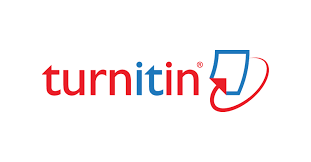CLUSTERING TECHNIQUE IN TEACHING WRITING DESCRIPTIVE TEXT FOR EFL CLASSES: IS IT EFFECTIVE?
DOI:
https://doi.org/10.32493/ljlal.v4i2.20515Keywords:
Writing, Descriptive Text, Clustering TechniqueAbstract
In writing process there is a prewriting step. One of the prewriting steps is clustering. Clustering technique is a prewriting technique to produce ideas. The objective of the research is to find out whether there is a positive and significant effect of using clustering technique in teaching writing descriptive text for EFL classes at a secondary school. To collect the data the researchers used written test and observation. The researchers used quantitative research. This research used quasi experimental class with using experimental class and control class. The population of this research was all of the students in EFL classes at a secondary school, and the sample of this research is class IPA 2 and IPA 3. To analyze the data, the researchers used the formulation t-test. The result of this research show that df is 70 with t-table 5% is 1,667 with the t-observation is 12,1 it is mean that t-observation > t-table or it can be written 12,1>1,667. Therefore can be concluded that Ho is rejected. It means there is positive and significant, so the Clustering Technique was effective in teaching writing descriptive text on EFL classes at a secondary school.
References
Axelrod, R. B., & Cooper, C. R. (2010). St. Martin’s guide to writing (9th ed). Bedford/St. Martins.
Brown, H. D. (2006). Language assessment: Principles and classroom practices (Nachdr.). Longman.
Brown, H. D. (2007). Principles of language learning and teaching (5th ed). Pearson Longman.
Campbell, J., & Rico, G. (1992). Pain and Possibility: Writing Your Way through Personal Crisis. https://doi.org/10.2307/358660
Javed, M., Juan, W. X., & Nazli, S. (2013). A Study of Students’ Assessment in Writing Skills of the English Language. In Online Submission (Vol. 6, Issue 2, pp. 129–144). https://eric.ed.gov/?id=ED544075
Jayanti, A. D. (2019). | Jayanti. ENGLISH FRANCA : Academic Journal of English Language and Education, 3(01), 71–94. https://doi.org/10.29240/ef.v3i01.843
Jeremy Harmer. (2007). The Practice of English Language Teaching—4th Edition. Pearson longman.
Karen Blanchard & Christine Root. (2022). Ready to Write: A First Composition Text (3rd edition). Pearson ESL. http://tesl-ej.org/ej30/r2.html
Langan, J. (2008a). College writing skills with readings (7th ed). McGraw-Hill.
Langan, J. (2008b). College writing skills with readings (7th ed). McGraw-Hill.
Means, B., & Lindner, L. (1998). Teaching Writing in Middle School: Tips, Tricks, and Techniques. Libraries Unlimited.
Meiranti, R. (2012). Improving Students’ Writing Skills through Field Trip Method. English Review: Journal of English Education, 1(1), 89–96.
Oshima, A. (2001). Introduction to Academic Writing: Second Edition. Longman.
Sari, F., & Wahyuni, S. (2018). THE USE OF CLUSTERING TECHNIQUE TO IMPROVE THE STUDENTS’ SKILL IN WRITING DESCRIPTIVE PARAGRAPH. English Community Journal, 2(1), 167–174. https://doi.org/10.32502/ecj.v2i1.1006
Septiyana, L. (2017). Somatic, Auditory, Visual, Intellectual (Savi): Its Effectiveness to Teach Writing from The Perspective of Students’critical Thinking. Pedagogy: Journal of English Language Teaching, 4(2), 120–132.
Septiyana, L., & Firmansyah, B. (2020). The Use of Carousel Feedback Technique to Improve Efl Students’ Writing in A Secondary School. BEYOND LINGUISTIKA (Journal of Linguistics and Language Education), 3(1), Article 1. https://doi.org/10.36448/bl.v3i1.2434
Siburian, T. A. (2013). Improving Students Achievement On Writing Descriptive Text Through Think Pair Share. IJLLALW, 03(03), 30–43.
Sukmawati, N. N., & Nasution, S. S. (2020). Genre-Based Approach: Can It Improve the Informatics Engineering Students’ Writing Skill? JEES (Journal of English Educators Society), 5(1), 95–102.







